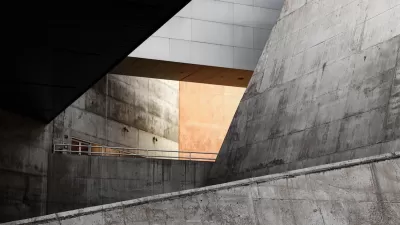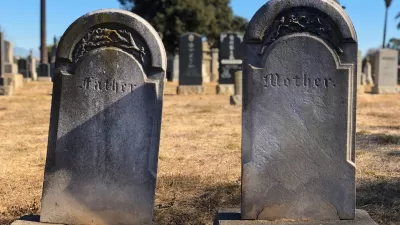At Yale, a modernist landmark is preserved and revitalized. Ada Louise Huxtable looks at the challenges in updating the harshness of brutalist architecture.
"Rudolph's building was never trouble free. Too small from the start, it was a terrible fit for the painting and sculpture departments crammed into it. There were no climate controls. Unsympathetic remodeling sabotaged the architect's vision. According to Robert A.M. Stern, the dean of the architecture school, who initiated and championed the restoration, the building was in such a terminal state of dysfunction and disrepair that only the high cost and extreme difficulty of demolishing solid concrete saved it."
"Many of the preservation problems were due to Rudolph's "modernism." Boldly unconventional in concept, plan, materials and execution, the building's untested and experimental components had not only disintegrated beyond repair, but were inferior to subsequent advances in basic building technology. It made no sense, nor was it possible, to seek matching replacements. The structure was essentially stripped to its frame and rebuilt.
Because this degree of reconstruction skews our ideas about authenticity, it undermines a defining principle of preservation. For traditional restoration, old quarries can be reopened and old techniques revived to stay true to history. It is the retention or reuse of the original fabric that separates the genuine artifact from the Disney replica. For modernist buildings, the challenge and the process are disturbingly different. Replacement and reconstruction are increasingly necessary for obsolete materials and technologies. This requires unprecedented judgment calls, tailored to each individual structure."
FULL STORY: The Beauty in Brutalism, Restored and Updated

Planetizen Federal Action Tracker
A weekly monitor of how Trump’s orders and actions are impacting planners and planning in America.

Maui's Vacation Rental Debate Turns Ugly
Verbal attacks, misinformation campaigns and fistfights plague a high-stakes debate to convert thousands of vacation rentals into long-term housing.

Restaurant Patios Were a Pandemic Win — Why Were They so Hard to Keep?
Social distancing requirements and changes in travel patterns prompted cities to pilot new uses for street and sidewalk space. Then it got complicated.

In California Battle of Housing vs. Environment, Housing Just Won
A new state law significantly limits the power of CEQA, an environmental review law that served as a powerful tool for blocking new development.

Boulder Eliminates Parking Minimums Citywide
Officials estimate the cost of building a single underground parking space at up to $100,000.

Orange County, Florida Adopts Largest US “Sprawl Repair” Code
The ‘Orange Code’ seeks to rectify decades of sprawl-inducing, car-oriented development.
Urban Design for Planners 1: Software Tools
This six-course series explores essential urban design concepts using open source software and equips planners with the tools they need to participate fully in the urban design process.
Planning for Universal Design
Learn the tools for implementing Universal Design in planning regulations.
Heyer Gruel & Associates PA
JM Goldson LLC
Custer County Colorado
City of Camden Redevelopment Agency
City of Astoria
Transportation Research & Education Center (TREC) at Portland State University
Jefferson Parish Government
Camden Redevelopment Agency
City of Claremont





























